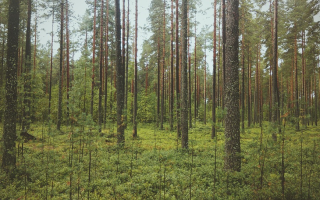Content
Everyone knows that walking in the fresh air is good for your health. On weekdays it is convenient to visit the nearest park, but on weekends it is better to go out of town to a pine forest or spruce forest. The benefits of the coniferous forest are undeniable: thanks to the clean air with the resinous smell of pine needles, a walk will give positive emotions, heal the body, and energize the whole week.
What forests are coniferous
Forests consisting of 80 percent or more of coniferous trees are called conifers. They grow in North America, in the north of Eurasia, less often found in the mountainous regions of Australia and South America.
In Russia, taiga massifs cover Eastern and Western Siberia, regions of the Far East. Coniferous forests are composed of pine, spruce, fir and larch. The last breed is the only one that sheds needles. The rest of the trees remain green all year round.
Larch and pine predominate in light coniferous forests. The tree crowns let in enough light and rainfall, useful for the development of dense undergrowth.
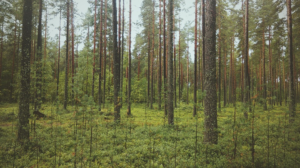
The dense canopy of dark-coniferous forests, consisting of spruce, fir, Siberian pine, tends to block light and heat, leaving the soil unfertile.
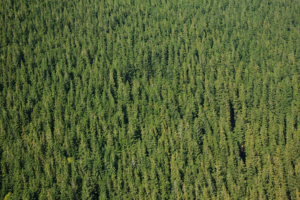
The conifers of the forest have adapted to the climate with short, cool summers with abundant rainfall and long, harsh winters. Thin needles replacing leaves have the beneficial quality of preventing moisture loss. And the tree branches looking down do not break under the weight of the snow.
How useful is a coniferous forest
In the age of developed technologies, when it is difficult to measure the harm and benefit to the body from synthetic pharmaceutical preparations and food products with GMO, it is worth turning to face nature. It is difficult to overestimate the benefits of conifers for humans. Evergreen forests relieve fatigue, heal the respiratory system, raise immunity, and heal the body.
Fresh air
No wonder they say that forests are the lungs of the planet. Coniferous trees supply oxygen to the atmosphere all year round and clean the air from chemical impurities.
The useful property of conifers to release phytoncides makes the air free from pathogens. Walks in the forest alleviate the symptoms of patients with bronchial and lung problems. It is not for nothing that sanatorium and resort establishments are located among coniferous forests.
Healthy air is beneficial for healthy people as well. Ionized oxygen, saturating the blood, activates physiological processes, accelerates the cleansing of the body from toxins and toxins. Coniferous resinous air improves physical and mental well-being, but sometimes it is harmful: excess oxygen can lead to spasms of the cerebral vessels.
Improving the environment and climate
In recent decades, scientists have been worried about the intensification of the greenhouse effect, leading to a warming of the climate. The limiting factor is the beneficial quality of coniferous forests all year round to use carbon dioxide in the process of continuous photosynthesis. Reducing the area of felling of coniferous trees helps to smooth out seasonal temperature fluctuations, frost, which has a beneficial effect on agriculture. Taiga massifs stop climate warming on a planetary scale.
Coniferous forests protect the soil from heavy precipitation, drying winds, prevent soil leaching and the formation of landslides. They serve as a filter for groundwater, prevent floods, waterlogging of the area.
A remedy for vitamin deficiency
The chemical composition of needles is rich and varied in biologically active substances: ascorbic acid, fat-soluble carotenes, tocopherol, organic acids.
The amount of vitamin C in needles is seasonal. The most useful in this regard are the tops illuminated by the sun. The best time to collect needles is winter, early spring.
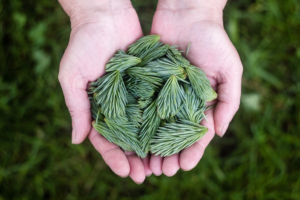
The useful characteristics of the needles saved the besieged Leningrad from scurvy of Russian sailors. The peoples of Siberia and North America. For centuries, coniferous needles have been used to replenish the body with vitamins.
To prepare the infusion, one part of the grated needles is combined with three parts of water. Add citric acid to taste, boil the mixture for 30 minutes, leave for 2 hours. If you drink half a glass of this useful drug daily, then you can forget about vitamin deficiency.
Folk remedy for dental health
Protection against colds and flu
To prevent the spread of infection, branches of coniferous trees are brought into the house, disinfecting the air in the premises.
If the infection has entered the body, then the healing properties of inhalation will help to stop it. The solution is easy to prepare yourself. To do this, spruce cones are boiled in water for at least 20 minutes. Then they breathe hot air, covered with a towel.
A useful decoction of a liter of milk and 50 g of pine needles, boiled for half an hour over low heat, will also ease the patient's condition.
Cure stroke
Pine cones collected in ecologically clean forests no more than 5 cm in size have the ability to prevent and eliminate the consequences of a stroke. On a liter of vodka, 100 g of plant materials are insisted for two weeks. Or seven small cones are poured with half a liter of alcohol, withstand the same period.
It is taken for a long time under the supervision of a doctor in a teaspoon 20 minutes before the main meals.
The benefits of cones in acute disorders of cerebral circulation - in the content of tannin, which prevents the destruction of neurons and the onset of paralysis.
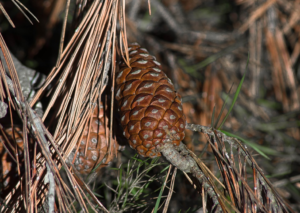
Other biologically active components thin the blood, helping the delivery of tannins to the brain and restoring the walls of blood vessels.
Removing fatigue and improving tone
For humans, the benefits of the coniferous forest are not only in healing the body, but also in mental health. Walking in a pine forest, spruce forest, taiga, breathing clean air, people feel anxious thoughts and nervous tension go away. The sight of majestic pines, larch trees, fir trees, acting as antidepressants, soothes, gives a boost of energy.
Emotional stability helps to strengthen the properties of conifers, which improve physiological performance. In the forest, the pulse, pressure is normalized, the volume of inhaled air increases.
If there is no forest nearby, vitality is increased with coniferous essential oils, and neuroses are treated with baths with their addition.
Natural antioxidant content
Insufficient air ionization weakens the body's immune defenses, leads to distraction, a general deterioration in well-being.
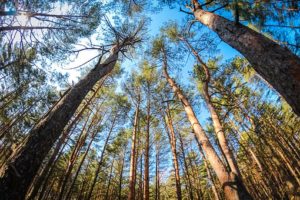
Antioxidants such as vitamin C, tocopherol, retinol are several times more effective than dihydroquercetin (DHA) obtained from Siberian larch wood.
The beneficial properties of coniferous DHA inhibit oxidative processes in the body by binding and removing free radicals.
Why are conifers in the city useful?
Deciduous plantations bring both benefits and harm to the townspeople. In the summer, they delight the eye with curly trimming, purify the air, give a saving shadow, but at the same time cause a number of inconveniences.
Clear harm to allergy sufferers is caused by the air with the pollen of birch, poplar, elm during flowering trees. During the leaf fall, working hands, tools and transport are required. Therefore, the question of replacing old trees with coniferous seedlings with more useful properties is increasingly being raised.
Conifers all year round:
- emit oxygen, process carbon dioxide;
- charge air with air ions, emit phytoncides;
- absorb road noise from moving vehicles;
- increase soil fertility.
Not only useful qualities are important, but also the aesthetic side of tree planting. If deciduous trees show green decoration only in summer, then conifers delight the eye both in slushy autumn and cold snowy winter.
Recommendations for walking in the coniferous forest
For patients with hypertension, heart failure and bronchial asthma, the benefits and harms to the health of the pine forest stand side by side. In hot, windless weather, the air tends to accumulate ozone and turpentine, which negatively affects health. When visiting a coniferous forest, dizziness, migraines, and disturbed night sleep were noted. For people with cardiovascular problems, it is better to walk in a deciduous forest in summer.
In early spring, late autumn, it is contraindicated to breathe damp air for people with diseases of the bronchopulmonary system.

The benefits of pine forest for smokers are optimal in April, May, when coniferous species intensively release resin. Air with aromatic substances dilutes and removes phlegm, which makes breathing easier. But visiting the forest during this period harms people with bronchial asthma: attacks can become more frequent.
People who are healthy in the coniferous forest have a rest, gain strength all year round.
If we measure the benefits and harms of pine air, then the positive properties that affect health are much more negative. By following the recommendations, harm can be avoided.
Conclusion
The benefits of the coniferous forest make one think about preserving valuable tree species for posterity, so that future generations can breathe the purest air necessary for the body.
Greening of cities with coniferous trees due to their medicinal properties is becoming increasingly important.
Forests benefit not only man, but also the planet, maintaining stable climatic conditions, preventing soil erosion, filtering drinking water supplies.
Do not forget about the harm caused by walking in a pine forest without taking into account the recommendations. The property of conifers to emit aromatic substances is dangerous for patients with bronchial asthma.

